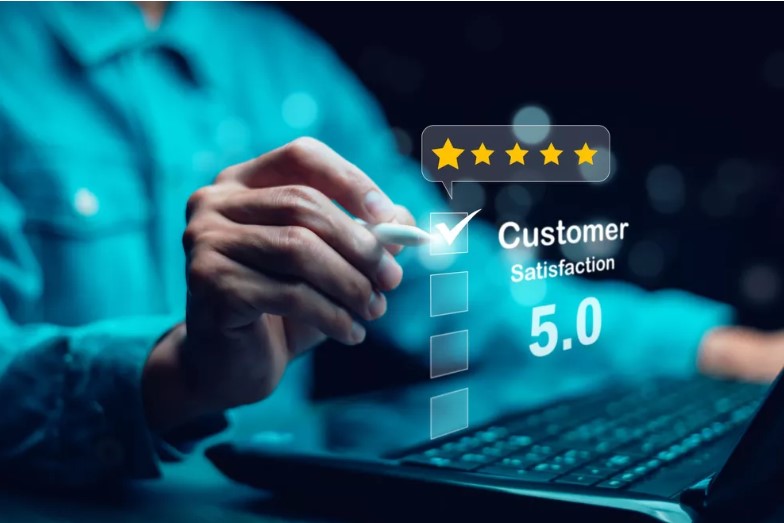Digital retailing has swiftly emerged as a game-changer in the manufacturer and dealer world, changing how companies interact with consumers and drive sales. This rapid rise of digital retailing has transformed the dynamics of commerce, presenting challenges and unexpected opportunities. In navigating this landscape, enterprises must adopt strategic approaches tailored to thrive in the digital retailing era.
The digital retailing revolution has redefined traditional paradigms, compelling OEMs and dealers to rethink their strategies and embrace new methods to connect with consumers. This article explores strategies for success in the age of digital retailing. Understanding and implementing these strategies could be the differentiating factor in achieving sustainable growth and relevance in the contemporary landscape.
Understanding the Digital Retailing Landscape
To understand the strategies essential for digital retailing success, it's vital to grasp the current landscape of online commerce. The rapid growth of digital retailing has been fueled by a confluence of factors, including technological advancements, shifting consumer behaviors, and the widespread adoption of e-commerce platforms. Consider the following key insights that illuminate the prevailing state of digital retailing:
- Explosive Growth: E-commerce sales reached a staggering $4.28 trillion in 2020, a significant increase from the previous year. This exponential growth underscores the influence of digital retailing in today's market.
- Changing Consumer Preferences: Modern consumers seek convenience, personalization, and seamless shopping experiences. This shift in preferences has propelled the demand for digitally-driven retail solutions that cater to evolving customer expectations.
- Mobile Dominance: Mobile commerce continues to ascend, with a substantial portion of online transactions occurring through mobile devices. As smartphones become ubiquitous, optimizing for mobile platforms has become non-negotiable for businesses venturing into digital retailing.
By understanding the dynamic landscape in which digital retailing operates, manufacturers and dealers can effectively strategize their approach to harness the full potential. The following strategies outlined in this article will align seamlessly with the current state of digital retailing, ensuring they are well-equipped to thrive in this fast-evolving domain.
Key Strategy 1: Seamless Omnichannel Integration
In the digital retailing world, seamless omnichannel integration stands for success, effectively combining the virtual and physical touchpoints of a customer's journey. This strategy pushes the limitations of individual sales channels, offering a cohesive and immersive experience across various platforms. Consider the following crucial aspects underpinning seamless omnichannel integration:
- Unified Customer Experience: Aligning retail's online and offline elements ensures a consistent and unified customer experience. Whether they engage through a website, mobile app, or physical store, the experience remains seamless and interconnected.
- Enhanced Brand Consistency: Omnichannel integration empowers businesses to maintain a uniform brand identity, conveying a coherent message to customers across all touchpoints. This fosters brand loyalty and strengthens the overall brand image.
- Data-Driven Insights: Gathering and analyzing data from multiple channels provides valuable insights into customer behavior and preferences. This data can inform targeted marketing strategies and product offerings, leveraging the power of omnichannel integration for informed decision-making.
By integrating these facets seamlessly, businesses can elevate their digital retailing capabilities and deliver a holistic experience that resonates with today's consumers. This strategy enhances customer satisfaction and propels businesses toward sustainable growth in the digital retailing landscape.
Key Strategy 2: Personalization and Customer Engagement
In the fast-paced arena of digital retailing, personalized experiences and robust customer engagement strategies reign supreme, shaping the foundation of enduring customer relationships. Businesses can foster meaningful connections and enhance customer loyalty by tailoring interactions to individual preferences and behaviors. Let's dive into the critical components of personalization and customer engagement:
- Tailored Recommendations: Employing algorithms and customer data enables the delivery of personalized product recommendations, catering to each customer's specific interests and buying patterns.
- Interactive Communication: Interactive tools such as personalized emails, live chat support, and targeted social media interactions are pivotal in personally engaging customers and fostering individualized attention.
- Feedback Utilization: Actively leveraging customer feedback and insights helps refine the overall shopping experience, demonstrating a commitment to meeting and exceeding customer expectations.
By leveraging personalization and customer engagement strategies, manufacturers and dealers can cultivate a customer-centric approach that transcends the transactional, building lasting connections and driving sustained growth in the digital retailing landscape.
Key Strategy 3: Data-Driven Decision Making
Data-driven decision-making is a cornerstone in the digital retailing landscape, empowering these businesses to leverage actionable insights and analytics for informed strategies and operational enhancements. Harnessing the power of data is instrumental in understanding customer behavior, market trends, and operational efficiencies. Let's discuss the pivotal elements of data-driven decision-making:
- Customer Insights: Utilizing data analytics provides deep insights into customer preferences, purchase behaviors, and engagement patterns. This knowledge forms the bedrock for crafting targeted marketing campaigns and enhancing the customer experience.
- Operational Efficiency: Data analysis can optimize inventory management, supply chain operations, and pricing strategies, leading to cost savings and increased operational efficiency.
- Forecasting and Trend Analysis: Through historical data analysis and trend forecasting, businesses can anticipate market shifts, demand patterns, and upcoming trends, enabling proactive adjustments and strategic planning.
By integrating data-driven decision-making into the fabric of their operations, manufacturers and dealers can navigate the complexities of digital retailing with clarity and precision, positioning themselves for sustained success amidst the ever-evolving e-commerce landscape.
The Future of Digital Retailing
As digital retailing continues its ascent, the future promises further evolution and innovation, necessitating adaptability and foresight by aiming to stay ahead of the curve. Embracing upcoming trends and advancements is imperative in capitalizing on new opportunities and retaining competitive advantage. Let's explore the future of digital retailing:
- AI-Powered Personalization: Artificial intelligence will drive enhanced personalization, utilizing advanced algorithms to deliver hyper-personalized recommendations and experiences, further elevating customer engagement.
- AR and VR Integration: Augmented reality (AR) and virtual reality (VR) technologies will increasingly merge with digital retailing, offering immersive and interactive shopping experiences and blurring the lines between physical and online shopping.
- Sustainability and Ethical Commerce: With growing consumer consciousness, the future of digital retailing will witness a heightened focus on sustainability, ethical sourcing, and transparent supply chains, aligning with evolving consumer values.
By embracing these future trends and innovations, manufacturers and dealers can position themselves as frontrunners in the digital retailing landscape. Harnessing the potential of these advancements to deliver unparalleled experiences to their customers will be instrumental in shaping their success.
About Rollick
Rollick connects manufacturers, dealers, finance, and insurance providers with in-market consumers in the Powersports, RV, and Marine industries to deliver a seamless customer journey. Rollick's solutions, utilized by over 130 OEMs and thousands of dealers, include new customer acquisition, enterprise lead management, digital retailing, inventory marketing, customer experience/loyalty, and marketing automation. In addition, the company has rapidly built its GoRollick.com outdoor recreational vehicle buying marketplace to include a nationwide network of dealers and an affinity partner network with access to over 250 million high-quality customers, including policyholders of major insurance providers, employees at more than 2,000 top U.S. companies, members of the military, veterans and first responders. For more information, visit Rollick.





